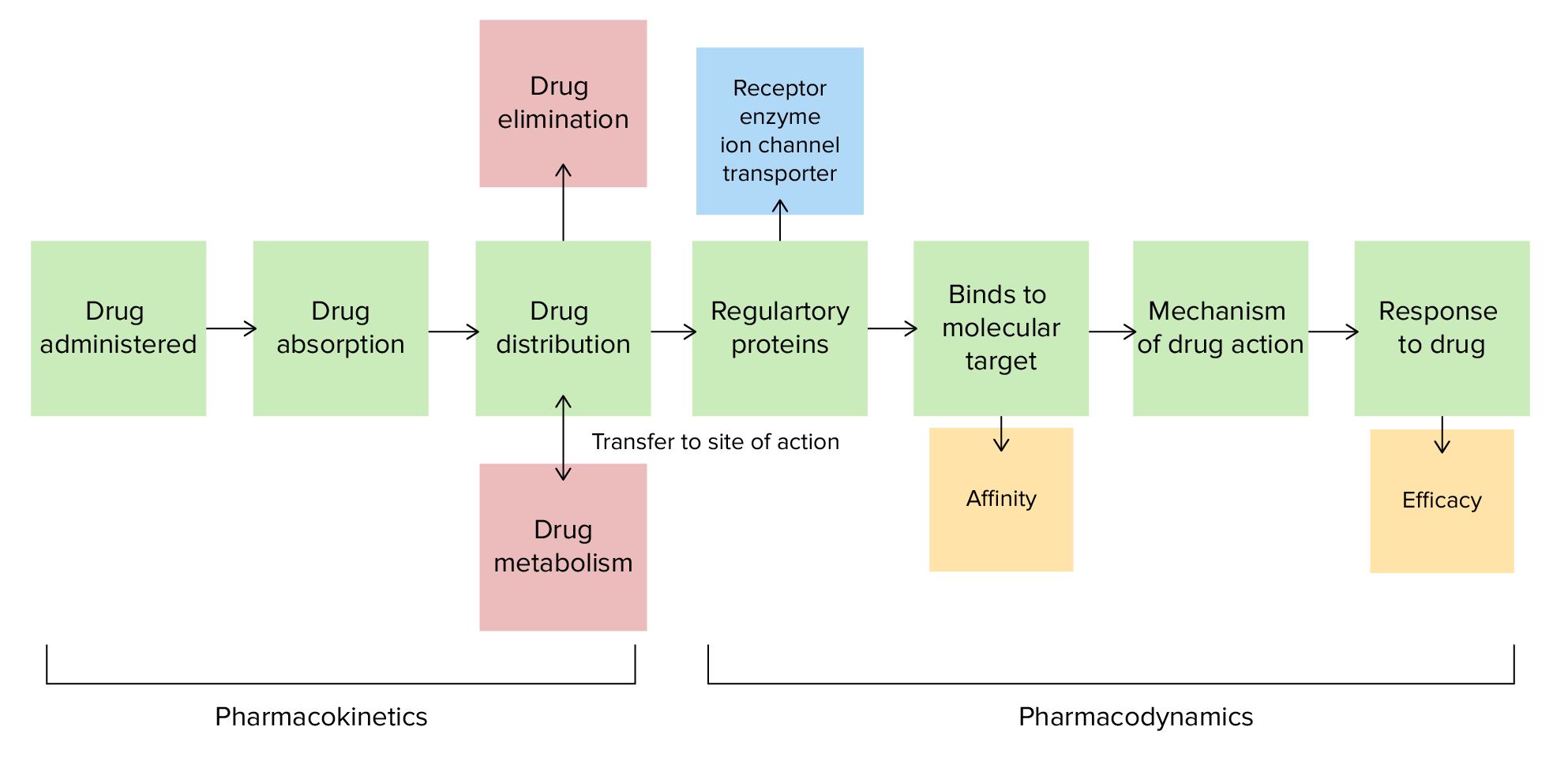Playlist
Show Playlist
Hide Playlist
Upregulation and Downregulation – Pharmacodynamics
-
Slides Upregulation Downregulation Pharmacodynamics.pdf
-
Reference List Pharmacology.pdf
-
Download Lecture Overview
00:01 Let's talk about something called up and downregulations. This is a process where the number of receptors is dependant upon receptor binding. So at the top of our image here, you can see that upregulation refers to a system where you have more and more receptors being expressed at the cell surface because there is very little activity. 00:23 So, the net result is, is that if you have low concentration of a drug, your cell becomes more sensitive to that drug because it has more receptors. 00:33 Downregulation is where you have the opposite. You have fewer and fewer receptors because they are always being used up and broken down. That's called downregulation and the effect on the drug is tachyphylaxis, which is a reduced drug effect over time.
About the Lecture
The lecture Upregulation and Downregulation – Pharmacodynamics by Pravin Shukle, MD is from the course Pharmacokinetics and Pharmacodynamics.
Included Quiz Questions
What refers to a relatively sudden decrease in response to a drug over time, potentially due to downregulation or desensitization of receptors?
- Tachyphylaxis
- Reduced affinity
- Prophylaxis
- Potency
- Suicide inhibition
Customer reviews
5,0 of 5 stars
| 5 Stars |
|
1 |
| 4 Stars |
|
0 |
| 3 Stars |
|
0 |
| 2 Stars |
|
0 |
| 1 Star |
|
0 |
So easy to learn, this classes need more diffusion, thank you.




